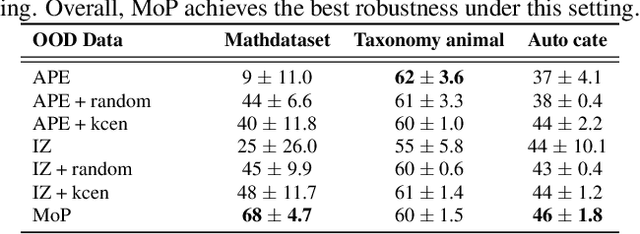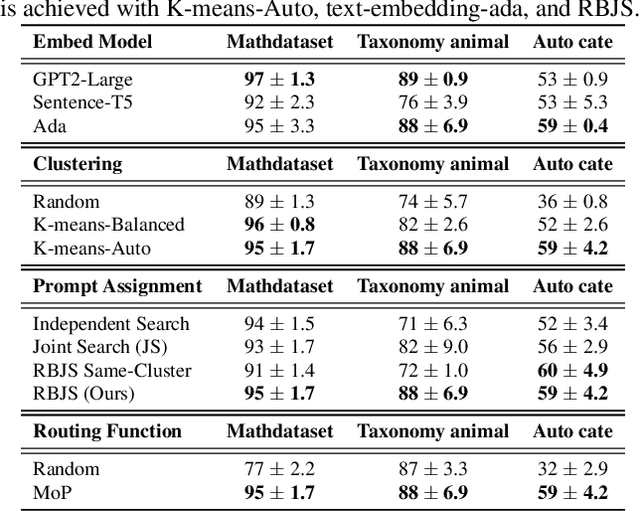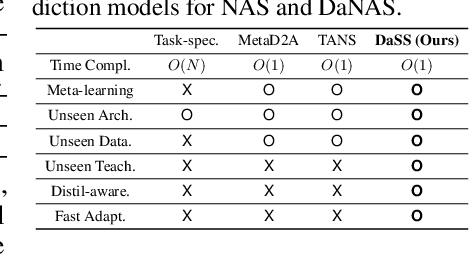Sohyun An
Don't Think Longer, Think Wisely: Optimizing Thinking Dynamics for Large Reasoning Models
May 27, 2025Abstract:While recent success of large reasoning models (LRMs) significantly advanced LLMs' reasoning capability by optimizing the final answer accuracy using reinforcement learning, they may also drastically increase the output length due to overthinking, characterized by unnecessarily complex reasoning paths that waste computation and potentially degrade the performance. We hypothesize that such inefficiencies stem from LRMs' limited capability to dynamically select the proper modular reasoning strategies, termed thinking patterns at the right position. To investigate this hypothesis, we propose a dynamic optimization framework that segments model-generated reasoning paths into distinct thinking patterns, systematically identifying and promoting beneficial patterns that improve the answer while removing detrimental ones. Empirical analysis confirms that our optimized thinking paths yield more concise yet sufficiently informative trajectories, enhancing reasoning efficiency by reducing attention FLOPs by up to 47% while maintaining accuracy for originally correct responses. Moreover, a non-trivial portion of originally incorrect responses are transformed into correct ones, achieving a 15.6% accuracy improvement with reduced length. Motivated by the improvement brought by the optimized thinking paths, we apply a preference optimization technique supported by a pairwise dataset contrasting suboptimal and optimal reasoning paths. Experimental evaluations across multiple mathematical reasoning benchmarks reveal that our method notably reduces computational overhead while simultaneously improving reasoning accuracy, achieving up to a 12% accuracy improvement and reducing token usage from approximately 5,000 to 3,000 tokens.
One Prompt is not Enough: Automated Construction of a Mixture-of-Expert Prompts
Jun 28, 2024



Abstract:Large Language Models (LLMs) exhibit strong generalization capabilities to novel tasks when prompted with language instructions and in-context demos. Since this ability sensitively depends on the quality of prompts, various methods have been explored to automate the instruction design. While these methods demonstrated promising results, they also restricted the searched prompt to one instruction. Such simplification significantly limits their capacity, as a single demo-free instruction might not be able to cover the entire complex problem space of the targeted task. To alleviate this issue, we adopt the Mixture-of-Expert paradigm and divide the problem space into a set of sub-regions; Each sub-region is governed by a specialized expert, equipped with both an instruction and a set of demos. A two-phase process is developed to construct the specialized expert for each region: (1) demo assignment: Inspired by the theoretical connection between in-context learning and kernel regression, we group demos into experts based on their semantic similarity; (2) instruction assignment: A region-based joint search of an instruction per expert complements the demos assigned to it, yielding a synergistic effect. The resulting method, codenamed Mixture-of-Prompts (MoP), achieves an average win rate of 81% against prior arts across several major benchmarks.
* ICML 2024. code available at https://github.com/ruocwang/mixture-of-prompts
Meta-prediction Model for Distillation-Aware NAS on Unseen Datasets
May 26, 2023



Abstract:Distillation-aware Neural Architecture Search (DaNAS) aims to search for an optimal student architecture that obtains the best performance and/or efficiency when distilling the knowledge from a given teacher model. Previous DaNAS methods have mostly tackled the search for the neural architecture for fixed datasets and the teacher, which are not generalized well on a new task consisting of an unseen dataset and an unseen teacher, thus need to perform a costly search for any new combination of the datasets and the teachers. For standard NAS tasks without KD, meta-learning-based computationally efficient NAS methods have been proposed, which learn the generalized search process over multiple tasks (datasets) and transfer the knowledge obtained over those tasks to a new task. However, since they assume learning from scratch without KD from a teacher, they might not be ideal for DaNAS scenarios. To eliminate the excessive computational cost of DaNAS methods and the sub-optimality of rapid NAS methods, we propose a distillation-aware meta accuracy prediction model, DaSS (Distillation-aware Student Search), which can predict a given architecture's final performances on a dataset when performing KD with a given teacher, without having actually to train it on the target task. The experimental results demonstrate that our proposed meta-prediction model successfully generalizes to multiple unseen datasets for DaNAS tasks, largely outperforming existing meta-NAS methods and rapid NAS baselines. Code is available at https://github.com/CownowAn/DaSS
DiffusionNAG: Task-guided Neural Architecture Generation with Diffusion Models
May 26, 2023



Abstract:Neural Architecture Search (NAS) has emerged as a powerful technique for automating neural architecture design. However, existing NAS methods either require an excessive amount of time for repetitive training or sampling of many task-irrelevant architectures. Moreover, they lack generalization across different tasks and usually require searching for optimal architectures for each task from scratch without reusing the knowledge from the previous NAS tasks. To tackle such limitations of existing NAS methods, we propose a novel transferable task-guided Neural Architecture Generation (NAG) framework based on diffusion models, dubbed DiffusionNAG. With the guidance of a surrogate model, such as a performance predictor for a given task, our DiffusionNAG can generate task-optimal architectures for diverse tasks, including unseen tasks. DiffusionNAG is highly efficient as it generates task-optimal neural architectures by leveraging the prior knowledge obtained from the previous tasks and neural architecture distribution. Furthermore, we introduce a score network to ensure the generation of valid architectures represented as directed acyclic graphs, unlike existing graph generative models that focus on generating undirected graphs. Extensive experiments demonstrate that DiffusionNAG significantly outperforms the state-of-the-art transferable NAG model in architecture generation quality, as well as previous NAS methods on four computer vision datasets with largely reduced computational cost.
 Add to Chrome
Add to Chrome Add to Firefox
Add to Firefox Add to Edge
Add to Edge